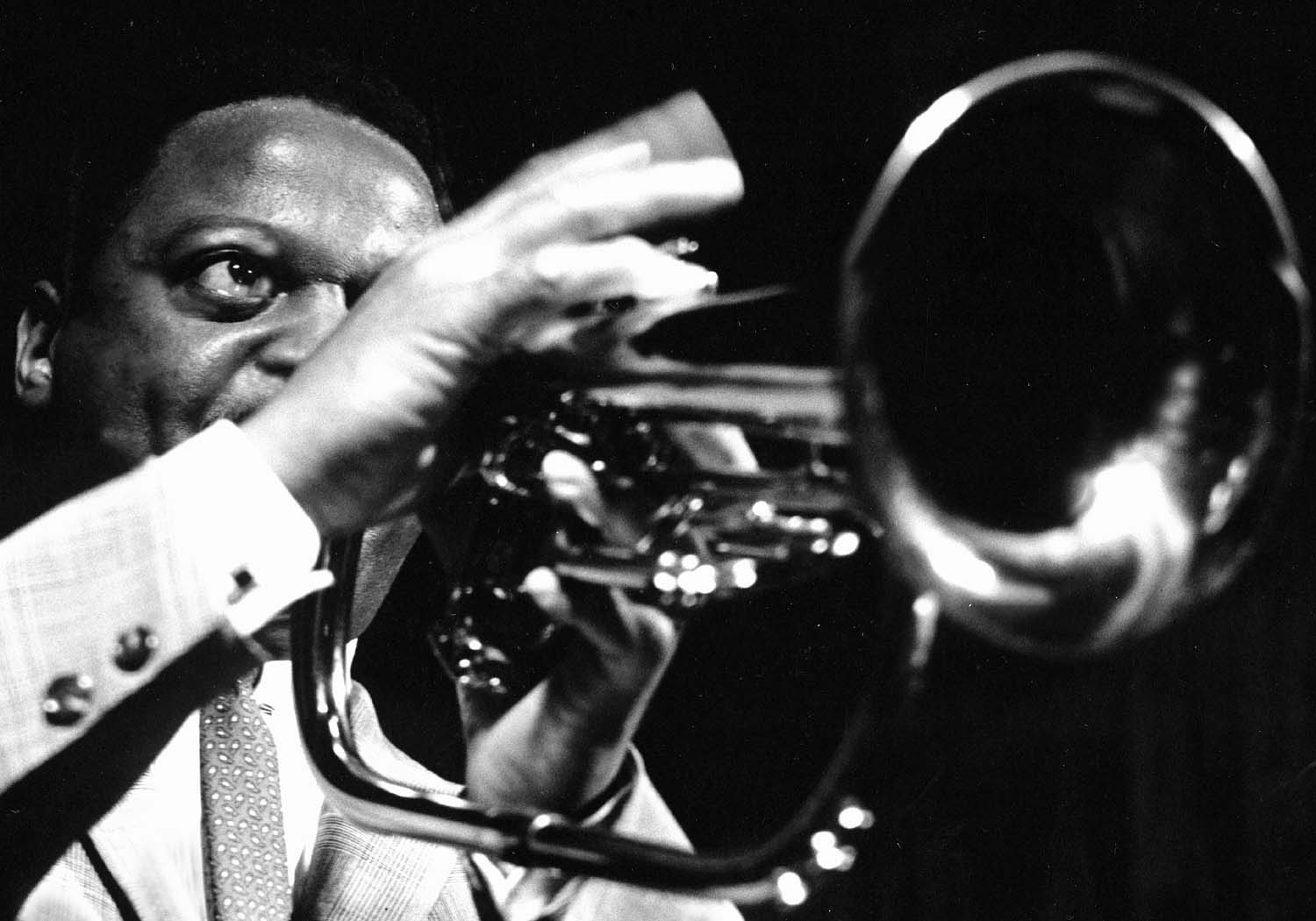
Clark Terry on flugelhorn. Photo courtesy of the artist.
Maybe it’s life on the road with so much downtime in tour buses and airports; or it could be that hours spent hanging around backstage create a fertile environment for developing their skills as storytellers. But most jazz musicians are masters of the well-told jazz anecdote, tall tales of jazz history and personal adventures. On this edition of Riverwalk Jazz, four celebrated jazzmen demonstrate their chops at the fine art of the jazz anecdote.
Jazz trumpeter Clark Terry holds the rare distinction of being a veteran of two epic ensembles at the height of their renown —the Count Basie and Duke Ellington orchestras. On this radio broadcast, Clark recalls touring with Count Basie, and kids around saying, “you had to edge Basie a little” to get him to spend money on necessities, such as sleeper cars for the band on long train journeys or new uniforms. Clark swings two tunes from his long career: Charlie Parker’s “Hymn” recorded during his partnership with valve trombonist Bob Brookmeyer; and the classic Basie blues “Swingin’ the Blues.”
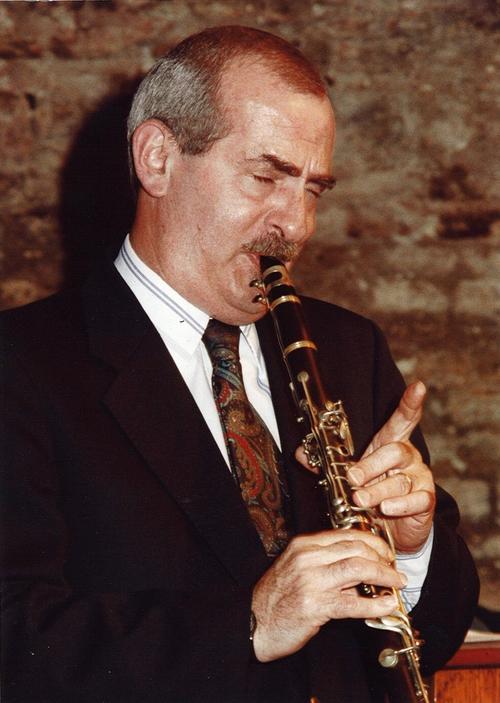
Kenny Davern. Photo courtesy of Elsa Davern.
Kenny Davern is widely acknowledged as the foremost jazz clarinet player inspired by classic New Orleans and Chicago styles, working in the second half of the 20th century. Here, he tells the story of how he came to meet his hero Pee Wee Russell in the midst of a blizzard of near historic proportions. A deep, lifelong friendship developed between the two clarinet giants as a result of that first meeting. In tribute to his mentor, Davern performs a Russell signature tune, “Pee Wee’s Blues.”
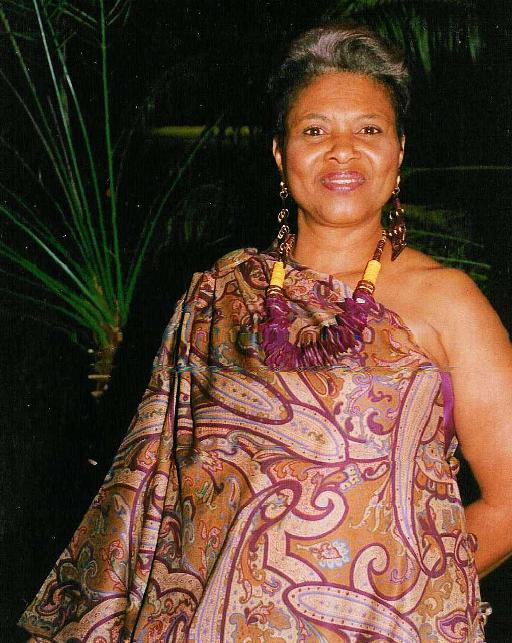
Topsy Chapman. Photo courtesy of the artist.
New Orleans singer and actor Topsy Chapman was introduced to Riverwalk Jazz via pianist Butch Thompson. Her first show for the radio series was a tribute to blues superstar Bessie Smith. Here, Topsy sings “I Cried For You.” First published in 1923, the tune entered the jazz world via a recording by Billie Holiday and Teddy Wilson in 1936. Since then, jazz and pop singers through the decades, including Ella Fitzgerald, Ray Charles and Nat Cole, have covered the number.
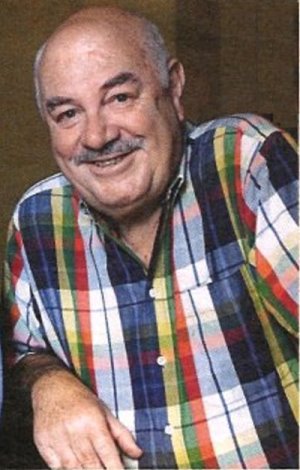
Bob Barnard. Photo courtesy of the artist.
Cornet master Bob Barnard is one of Australia’s most notable jazz exports. Barnard first garnered international attention in the 1960s touring Britain and Europe with a group of all-star players led by the storied Australian bandleader and pianist Graeme Bell. Bell’s enthusiasm for classic jazz and his early tours had a profound influence on the course of traditional jazz in Europe from the 1940s onward. In 1974 Bob Barnard formed his own band, performing at jazz festivals and parties worldwide, at times with The Jim Cullum Jazz Band. Keen friends and fellow cornetists Cullum and Barnard have frequently shared the stage in the US and ‘down under’ in Australia, New Zealand and Tasmania.
On this radio show, Bob offers a few favorite Aussie idioms and is featured on three tunes with Jim and the Band: “I’ve Heard That Song Before,” made famous by Swing Era bandleader Harry James; “Emaline,” often played by Eddie Condon with Bobby Hackett on cornet; and “Struttin’ With Some Barbecue,” a tune from the potent 1920s Chicago recordings of Louis Armstrong’s Hot 5, heard here in a Hackett-inspired arrangement.
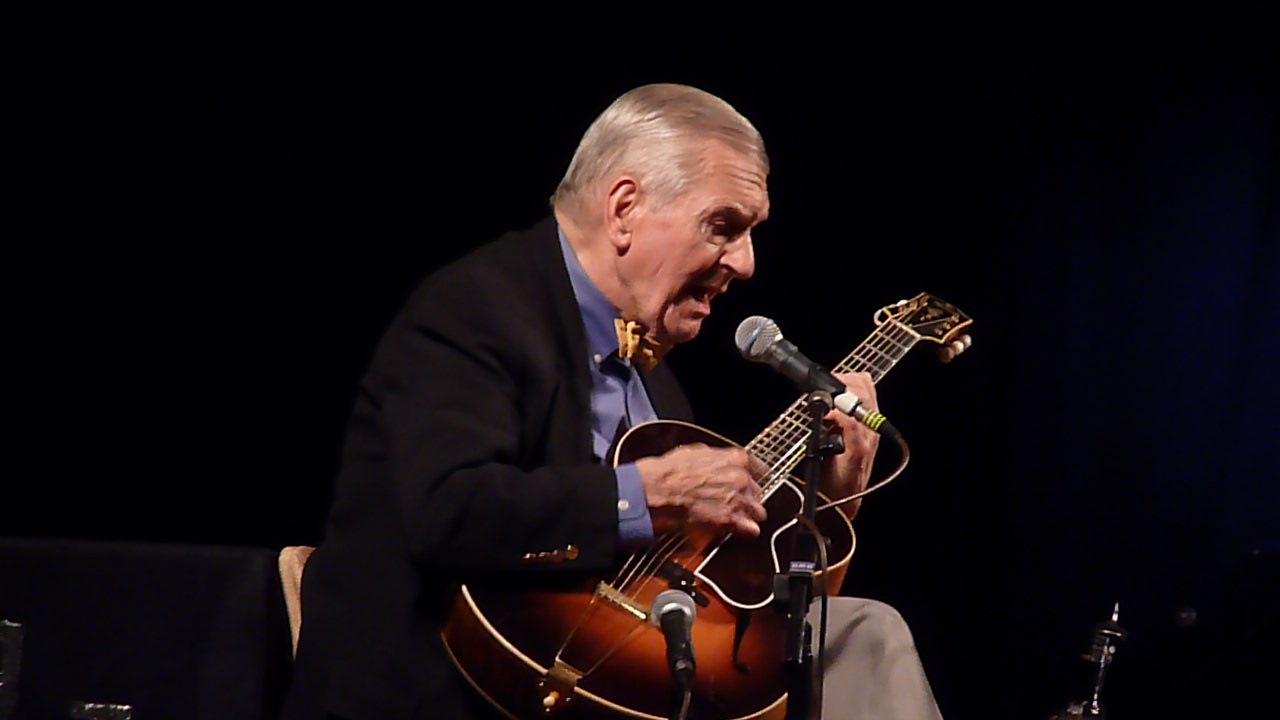
Marty Grosz by Allison Kerr, courtesy of the artist.
When it comes to mythic performers and tall tales, guitarist, vocalist and raconteur Marty Grosz may be jazz’s greatest storyteller since Joe Venuti. With Marty, the simple act of introducing a tune turns into a wild tale, as in his intro to “Isn’t Love the Strangest Thing?” on this week’s show.
Photo credit for Home Page: Martzy Grosz by Allison Kerr. Courtesy of the artist.
Text based on Riverwalk Jazz script by Margaret Moos Pick © 1997

